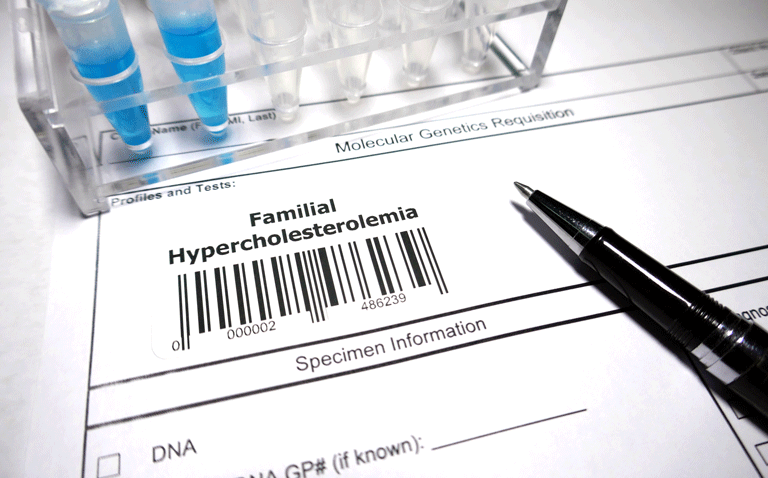PCSK9 inhibitor persistence in patients with familial hypercholesterolaemia is high and linked with an improvement LDL-C goal achievement
PCSK9 inhibitor persistence in patients with familial hypercholesterolaemia (FH) appears to be very high over time and associated with achievement of low-density lipoprotein cholesterol (LDL-C) goals as well as an improvement in quality-of-life according to an analysis of clinical practice data by Spanish researchers.
Familial hypercholesterolaemia is associated with premature atherosclerotic cardiovascular diseases and is inherited as an autosomal dominant trait. Due to the presence of dysfunctional low-density lipoprotein (LDL) receptors because of a genetic mutation, serum LDL-C levels are considerably increased from birth. Within the general population, a recent meta-analysis of 62 studies estimated a pooled FH prevalence of 1:311. According to the 2019 ESC/EAS Guidelines for the management of dyslipidaemias, patients with FH are categorised as being at very high risk of cardiovascular disease. Consequently, the guidelines recommend a therapeutic regimen that achieves ≥50% LDL-C reduction from baseline and an LDL-C goal of <1.4 mmol/L (<55 mg/dL). In addition, studies have suggested that the use of a PCSK9 inhibitor led to a 54.9% mean reduction in LDL-C from baseline in those with severe heterozygous FH. Nevertheless, information on the persistence or adherence to treatment with PCSK9 inhibitors in patients with FH, which is required to reduce the burden of atherosclerotic disease over time, is lacking. In the current study, researchers set out to examine the persistence to treatment, efficacy and impact on quality of life of PCSK9 inhibitor use in FH patients within a real-world clinical setting.
The researchers used data from the Spanish Familial Hypercholesterolaemia cohort study (SAFEHEART), an open, prospective study in genetically defined FH patients in Spain. They included patients on stable lipid-lowering therapy and who were managed and with a PCSK9 inhibitor (PCSK9i), although the choice of which agent was decided by the treating clinician. For the study, researchers measured persistence as the % of patients staying on a PCS9Ki at the end of each year of follow-up and quality of life was assessed with the EuroQol 5D.
PCSK9 inhibitors persistence and effectiveness over time
A total of 696 patients with a median age of 56.4 years (46% female) were included and followed for a median of 3.7 years with the median baseline LDL-C being 3.8 mmol/L. Background lipid lowering therapy was a statin and ezetimibe in 74.6% of cases and statin monotherapy in 17.5% of cases.
During the follow-up, persistence with PCSK9i was 96.1% for the whole period. At the last follow-up visit, the median LDL-C had reduced by 58%. In addition, at the last follow-up visit, 48% of patients had achieved the 2019 ESC/EAS LDL-C goal.
There were also improvements in quality of life after the first year and this remained stable over time.
The authors concluded that there was long-term persistence with PCSK9i in patients with FH patients within a clinical practice setting and that use of a PCSK9i vastly increased attainment of LDL-C goals.
Citation
Alonso R et al. Persistence with long-term PCSK9 inhibitors treatment and its effectiveness in Familial Hypercholesterolemia: data from the SAFEHEART study. Eur J Prev Cardiol 2022










